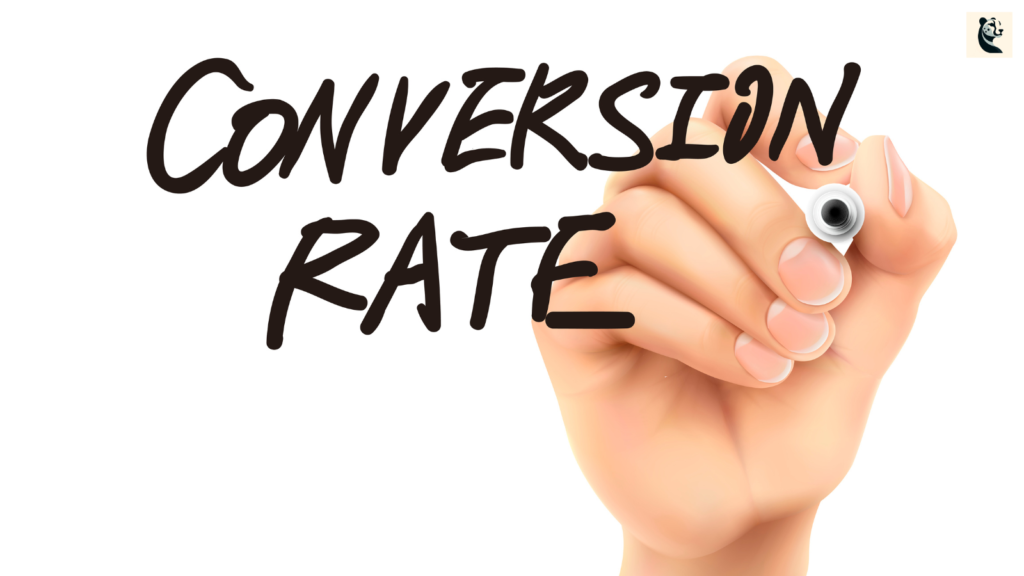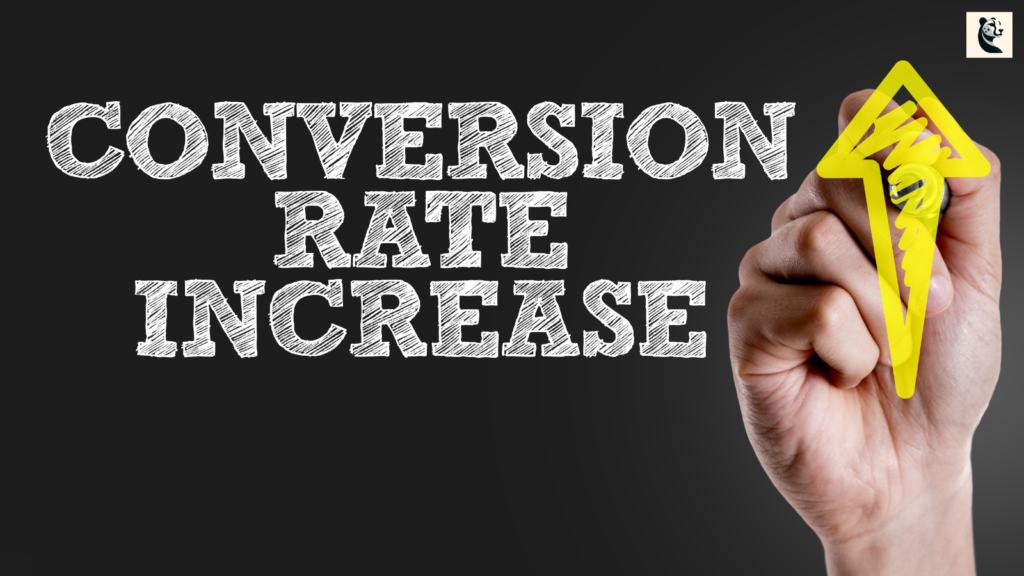Small businesses must leverage every available tool to stand out and thrive in the competitive business world.
One of the most effective strategies is Conversion Rate Optimization (CRO), which focuses on increasing the percentage of website visitors who take desired actions, such as purchasing or signing up for a newsletter.
Small businesses can drive significant results and boost their bottom line by implementing simple yet powerful CRO strategies.
This blog post will explore five simple CRO strategies that drive big results for small businesses.
We’ll cover essential techniques such as improving website speed, conducting A/B testing, optimising landing pages, enhancing user experience, and leveraging social proof.
These strategies are easy to implement and substantially improve conversion rates, helping small businesses maximise their online potential.
Whether you want to refine your current CRO efforts or just get started, this guide will provide practical insights and actionable tips to enhance your website’s performance and drive more conversions.

Let’s dive into these five strategies and see how they can transform your small business’s online presence.
#1 Understanding Conversion Rate Optimization (CRO) and Its Importance
What is Conversion Rate Optimization (CRO)?
Conversion Rate Optimization (CRO) is a systematic process of increasing the percentage of website visitors who complete a desired action—whether making a purchase, filling out a form, or subscribing to a newsletter.
CRO involves understanding how users navigate your site, what actions they take, and what’s stopping them from completing your goals.
By making data-driven changes to your website, you can improve user experience and, consequently, your conversion rates.
How CRO Works
At its core, CRO is about getting more value from the traffic you already have. It involves analysing user behaviour, formulating hypotheses for improving conversions, testing those hypotheses (typically through A/B testing), and implementing changes based on the results.
This continuous process helps refine and optimise various elements of your website, such as headlines, calls to action (CTAs), forms, and page layouts, to enhance their effectiveness in converting visitors.
Why CRO is Essential for Small Businesses
Importance of Optimizing Conversion Rates:
For small businesses, every visitor to your website represents a potential customer. Optimising conversion rates means increasing sales and leads without attracting more visitors. This is especially crucial for small businesses with limited marketing budgets, as it maximises the return on investment (ROI) from existing traffic.
Benefits of CRO for Small Businesses:
Increased Sales and Revenue: By converting more visitors, you directly boost your sales and revenue without additional marketing costs. For instance, if your current conversion rate is 2% and you can increase it to 4%, you effectively double your sales.
Better ROI on Marketing Efforts: CRO helps you get the most out of your marketing campaigns by ensuring that more traffic to your site results in conversions. This means higher efficiency and effectiveness of your marketing spend.
Improved Customer Insights: Through the process of CRO, you gain valuable insights into customer behaviour and preferences. This data can inform other aspects of your business, from product development to customer service strategies.
Enhanced User Experience (UX): Many CRO strategies focus on improving the overall user experience. A better UX not only helps in converting visitors but also increases customer satisfaction and loyalty.
By understanding and implementing CRO, small businesses can unlock significant potential for growth and efficiency.
The next sections will delve into five specific CRO strategies that can help drive these big results.
#2 Top Five Simple CRO Strategies for Small Businesses
Strategy 1: Improve Website Speed for Better Conversions
Impact of Website Speed:
Website speed is a critical factor in user experience and conversion rates. According to Google, 53% of mobile users abandon sites that take longer than 3 seconds to load. A fast-loading website keeps visitors engaged, reduces bounce rates, and increases the likelihood of conversions.
Tips for Improving Website Speed:
Optimise Images
Large image files can significantly slow down your site. Image compression tools like TinyPNG or JPEG Optimizer can reduce file sizes without compromising quality. Additionally, consider using modern image formats like WebP, which offer better compression.
Use a Content Delivery Network (CDN):
A CDN stores copies of your site’s content in multiple locations worldwide, ensuring users access it from a nearby server. This reduces load times and improves performance. Popular CDN services include Cloudflare and Amazon CloudFront.
Minimise HTTP Requests:
Each element on your web page (images, scripts, CSS files) requires an HTTP request. To reduce the number of requests, combine CSS and JavaScript files, use CSS sprites for images, and remove unnecessary plugins or third-party scripts.
Strategy 2: Implement A/B Testing to Optimize Performance
Overview of A/B Testing:
A/B testing, or split testing, involves comparing two webpage versions to determine which performs better. This method helps identify the most effective elements in driving conversions.
Benefits of A/B Testing:
Data-Driven Decisions:
A/B testing provides concrete data on what works best for your audience, allowing you to make informed changes rather than relying on guesswork.
Continuous Improvement:
Regularly testing different elements can optimise your site for better performance and higher conversion rates.
Steps to Conduct Effective A/B Testing:
Define Goals: Define what you want to achieve with your A/B test, such as increasing click-through rates on a call-to-action (CTA) button or reducing form abandonment rates.
Identify Elements to Test: For accurate results, focus on one element at a time. Common elements to test include headlines, images, CTAs, and page layouts.
Analyse Results:
Use tools like Google Optimize, Optimizely, or VWO to set up and track your tests. Analyse the data to determine which version performed better and implement the winning variation.
By improving website speed and implementing A/B testing, small businesses can make substantial gains in their conversion rates.
The next section will discuss how optimising landing pages can enhance your conversion efforts.
Strategy 3: Optimize Landing Pages for Higher Conversion Rates
Importance of Landing Page Optimization:
Landing pages are crucial for capturing leads and driving conversions. A well-optimized landing page can significantly improve conversion rates by providing visitors with a focused, relevant, and persuasive experience.
Best Practices for Creating High-Converting Landing Pages:
Clear and Compelling Headlines:
Your headline is the first thing visitors see. It should be clear, attention-grabbing, and convey the value of your offer. Use concise language and focus on the benefits.
Strong Calls to Action (CTAs):
Your CTA should be prominently displayed and easy to understand. Use action-oriented language (e.g., “Get Started,” “Sign Up Now”) and make sure it stands out with a contrasting colour.
Minimal Distractions:
Reduce distractions by keeping your landing page clean and focused. Remove unnecessary navigation links and keep the content streamlined to guide visitors toward the desired action.
Social Proof:
Include testimonials, reviews, and trust badges to build credibility and reassure visitors. Social proof can significantly increase trust and persuade visitors to convert.
A/B Testing:
Continuously test different elements of your landing page to find what works best. Test headlines, CTAs, images, and form fields to optimise for higher conversions.
Strategy 4: Enhance User Experience (UX) for Increased Engagement
Role of UX in CRO:
A positive user experience is essential for keeping visitors engaged and encouraging them to convert. Good UX design makes it easy for users to navigate your site, find what they need, and take action.
Practical Tips for Improving UX:
Simplify Navigation:
Ensure your website has a clear, intuitive navigation structure. Use descriptive labels for menu items and provide a search function to help users find information quickly.
Ensure Mobile Responsiveness:
With more users accessing websites on mobile devices, it’s crucial to have a mobile-friendly design. Use responsive design techniques to ensure your site looks and functions well on all devices.
Provide Clear and Concise Information:
Present information clearly and concisely. Use bullet points, headings, and short paragraphs to make the content easy to read and digest.
Fast Load Times:
As discussed earlier, website speed is a critical factor in UX. Ensure your site loads quickly to keep users engaged.
Strategy 5: Leverage Social Proof to Build Trust and Boost Conversions
Explanation of Social Proof:
Social proof refers to the influence of other people’s actions and opinions on our behaviour. Showing others trust and value your product or service can significantly increase conversions.
Ways to Incorporate Social Proof:
Customer Reviews and Testimonials:
Display positive reviews and testimonials prominently on your website. Highlight specific benefits and results that customers have experienced.
Case Studies:
Create detailed case studies that showcase how your product or service has helped other customers achieve their goals. Include data and real-world results.
Trust Badges and Certifications:
Display trust badges, such as security seals, industry certifications, and awards, to build credibility and reassure visitors about the quality and safety of your offerings.
User-Generated Content:
Encourage customers to share their experiences on social media and feature this content on your website.
Small businesses can significantly improve their conversion rates by improving website speed, implementing A/B testing, optimising landing pages, enhancing user experience, and leveraging social proof.
These strategies are effective and accessible for businesses with limited resources.
The next section will delve deeper into best practices for CRO implementation.

#3 Best Practices for Effective CRO Implementation
Personalised Content and Offers to Improve Conversion Rates
Importance of Personalization:
According to Epsilon, Personalized experiences can lead to a 20% increase in sales. Personalisation makes visitors feel valued and understood, increasing their likelihood of converting.
Examples of Personalized Content and Offers:
Product Recommendations: Use data from past purchases or browsing behaviour to suggest relevant products to visitors. For example, if a user frequently browses kitchen appliances, show them related items or complementary products.
Dynamic Content: Display different content based on user segments, such as location, device, or past interactions. For instance, offer special discounts to returning visitors or showcase region-specific promotions.
Email Campaigns: Send personalised emails that address the recipient by name and include tailored product recommendations or exclusive offers based on their purchase history.
Implementation Tips:
- Use tools to collect and analyse user data for personalisation.
- Continuously test and refine your personalisation strategies to ensure they remain effective.
Tracking Key Metrics to Measure CRO Effectiveness
Key Metrics to Track:
Conversion Rate: The percentage of visitors who complete a desired action. This is the primary metric for evaluating the success of your CRO efforts.
Bounce Rate: The percentage of visitors who leave your site after viewing only one page. A high bounce rate may indicate that your landing pages need optimisation.
Average Session Duration: The average time visitors spend on your site. Longer sessions often correlate with higher engagement and better chances of conversion.
Click-Through Rate (CTR): The percentage of visitors who click on a specific link or CTA. A higher CTR indicates that your calls to action are effective.
Tools and Methods:
Google Analytics: Track and analyse various user behaviour and conversion metrics.
Heatmaps: Use tools like Hotjar or Crazy Egg to visualise where users click, scroll, and spend the most time on your pages.
User Feedback: Collect qualitative data through surveys, polls, and feedback forms to gain insights into user experiences and pain points.
Avoiding Common CRO Mistakes
Common Mistakes:
Not Testing Enough: Relying on assumptions rather than data can lead to missed opportunities. Always test different elements of your site to identify what works best.
Ignoring Mobile Optimization: A significant portion of web traffic comes from mobile devices, so ensuring your site is mobile-friendly is crucial. Neglecting mobile optimisation can result in lost conversions.
Making Changes Without Data: Implementing changes based on hunches rather than data can be counterproductive. Use data-driven insights to guide your CRO efforts.
Tips for Avoiding These Pitfalls:
Regular Testing: Continuously run A/B tests to optimise various elements of your site. Keep a testing schedule and document the results to track progress.
Mobile-First Design: Adopt a mobile-first approach to ensure your site is responsive and provides a seamless experience across all devices.
Data-Driven Decisions: Base all changes on solid data and user insights. Use analytics tools to gather and analyse data before making decisions.
Small businesses can implement CRO strategies that drive significant results by following these best practices. Personalising content and offers, tracking key metrics, and avoiding common mistakes are essential steps to maximising the impact of your CRO efforts.
Key Takeaways:
- Understand Your Audience: A successful CRO requires a deep understanding of your audience’s needs and behaviours. Use data and user feedback to gain insights and tailor your strategies accordingly.
- Test and Iterate: Continuous testing is crucial. Don’t rely on assumptions; use A/B testing and other methods to determine what works best for your audience. Implement the winning variations and keep testing new ideas.
Focus on User Experience: A positive user experience is at the heart of a successful CRO. Ensure your website is easy to navigate, mobile-friendly, and provides valuable content. Address any pain points that might deter users from converting. - Leverage Social Proof: Trust and credibility are key factors in driving conversions. Use customer reviews, testimonials, and trust badges to reassure potential customers and build confidence in your brand.
- Personalize Content: Tailor your content and offers to individual users based on their behaviour, preferences, and location. Personalisation can significantly enhance user engagement and conversion rates.
Conclusion
In today’s competitive digital landscape, Conversion Rate Optimization (CRO) is a crucial strategy for small businesses aiming to maximise their online potential.
Small businesses can significantly improve their conversion rates and overall performance by improving website speed, conducting A/B testing, optimising landing pages, enhancing user experience, and leveraging social proof.
Here’s a quick recap of the key strategies discussed:
- Improve Website Speed for Better Conversions: A faster website keeps visitors engaged and reduces bounce rates, leading to higher conversions.
- Implement A/B Testing to Optimize Performance: Regular testing allows you to make data-driven decisions and continuously refine your website for better results.
- Optimise Landing Pages for Higher Conversion Rates: Well-designed landing pages with clear headlines, strong CTAs, and minimal distractions can significantly boost conversions.
- Enhance User Experience (UX) for Increased Engagement: A positive user experience makes it easy for visitors to navigate your site and take desired actions.
- Leverage Social Proof to Build Trust and Boost Conversions: Displaying customer reviews, testimonials, and trust badges can enhance credibility and encourage conversions.
By following these strategies, you can make substantial strides in your conversion rates, turning more visitors into loyal customers.
Now that you have the knowledge and tools to optimise your conversion rates, it’s time to take action.
Start by analysing your current website performance and identifying areas for improvement. Implement the strategies discussed in this post and continuously test and refine your efforts to achieve the best results.
If you found this guide helpful, share it with your network and join the conversation in the comments below. We’d love to hear about your experiences with CRO and any additional tips you might have.
For more insights and resources on digital marketing and conversion optimisation, subscribe to our newsletter and stay ahead of the curve.
Together, let’s drive big results for your small business through effective Conversion Rate Optimization. Happy optimising!

FAQs
Q1: What is Conversion Rate Optimization (CRO)?
A1: Conversion Rate Optimization (CRO) is the process of increasing the percentage of website visitors who complete a desired action, such as making a purchase or signing up for a newsletter. It involves analysing user behaviour, conducting tests, and making data-driven changes to improve the user experience and conversion rates.
Q2: Why is website speed important for conversions?
A2: Website speed is crucial because slow-loading pages can frustrate users and lead to high bounce rates. According to Google, 53% of mobile users abandon sites that take longer than 3 seconds to load. Improving website speed helps keep visitors engaged, reduces bounce rates, and increases the likelihood of conversions.
Q3: How does A/B testing help improve conversion rates?
A3 A/B testing allows you to compare two web page versions to see which performs better. By testing different elements such as headlines, CTAs, and page layouts, you can identify what resonates most with your audience and make data-driven decisions to optimise your site for higher conversions.
Q4: What are the best practices for optimising landing pages?
A4 To optimise landing pages, focus on clear and compelling headlines, strong calls to action (CTAs), minimal distractions, and social proof. Use concise, persuasive content and visuals to guide visitors towards the desired action. Continuously test different elements to find the most effective combinations.
Q5: How can enhancing user experience (UX) increase conversions?
A5: Enhancing UX makes it easier for visitors to navigate your site, find information, and take action. Simplifying navigation, ensuring mobile responsiveness, and providing clear and concise content can improve user satisfaction and engagement, leading to higher conversion rates.
Q6: What is social proof, and how does it impact conversions?
A6: Social proof refers to the influence of other people’s actions and opinions on our behaviour. Displaying customer reviews, testimonials, case studies, and trust badges can build credibility and trust, encouraging more visitors to convert.
Q7: What tools can small businesses use for CRO?
A7: Some recommended CRO tools for small businesses include Google Optimize for A/B testing, Hotjar for heatmaps and user feedback, Crazy Egg for visual website analytics, Optimizely for advanced experimentation, and Unbounce for creating and testing landing pages.
Other Articles
How Micro-conversions Help Small Businesses Refine Marketing Strategies
Leverage AI for Conversion Optimization: Small Business Tips




